Features
Science vs religion-I

Like oil and water, science and religion are immiscible and belong to mutually exclusive domains without any interface. Whenever they have been attempted to be brought together, the result invariably has been confusion, conflict, and bloodshed, of which there are too many gory examples in history. Allow religion to explain the origin of the Universe, according to its own ideas, and you end up with corpses of men and women burnt at stakes.
By GOVIND BHATTACHARJEE
In Tao of Physics, Fritzof Capra wrote that science does not need religion and religion does not need science, while a man needs both. I am not so sure. Again, in The Demon-Haunted World: Science as a Candle in the Dark, Carl Sagan wrote, “Science is not only compatible with spirituality; it is a profound source of spirituality.
“When we recognize our place in an immensity of light-years and in the passage of ages, when we grasp the intricacy, beauty, and subtlety of life, then that soaring feeling, that sense of elation and humility combined, is surely spiritual.” If spirituality implies appreciating our own insignificance in the Universe and the resulting feeling of humbleness, then this has nothing to do with religion.
But, leaving aside spirituality, religion and science have never been compatible. While science teaches us a systematic, rational way of exploring this universe to understand the laws of nature that guide life and non-life, religion has brought untold misery and suffering upon humanity. throughout the course of history. by claiming certainty in “information” and “facts” amenable neither to reason nor to observation.
Like oil and water, science and religion are immiscible and belong to mutually exclusive domains without any interface. Whenever they have been attempted to be brought together, the result invariably has been confusion, conflict, and bloodshed, of which there are too many gory examples in history.
Allow religion to explain the origin of the Universe, according to its own ideas, and you end up with corpses of men and women burnt at stakes. Same with politics. Allow religion to rule a nation, according to its own theories, and you end up with Afghanistan, Pakistan, or Iran where the laws of Sharia are more important than human life or human happiness.
Given the chance, religion would turn this world into a demon-haunted place in no time – in fact it has attained a remarkable degree of success in doing so. But, what exactly is science, and what is religion? According to The Stanford Encyclopaedia of Philosophy, “One way to distinguish between science and religion is the claim that science concerns the natural world, whereas religion concerns the supernatural world and its relationship to the natural. Scientific explanations do not appeal to supernatural entities such as gods or angels (fallen or not), or to non-natural forces (such as miracles, karma, or qi).
“For example, neuroscientists typically explain our thoughts in terms of brain states, not by reference to an immaterial soul or spirit, and legal scholars do not invoke karmic load when discussing why people commit crimes.” Science concerns itself with what is or can be observed and seeks an immediate answer. Religion claims the answer is either unknowable or explained only with the help of faith, that is acceptance of something whose existence is indeterminate.
Science claims to explain phenomena or mysteries only through the tested method of empirical inquiry which is a series of steps involving observation-hypothesis-experiment-inference-theory-prediction-testing. This process is indispensable, even where it may not succeed in explaining all observed phenomena, whereas religion takes recourse to God and finds it absurd that by studying STEM subjects (Science-Technology, Engineering and Mathematics) alone, the concept of God can be reduced to irrelevance. Given the chance, it will subsume science, too.
In fact, a great deal of effort has already been invested towards this end, to start a dialogue between science and religion that is actually an exercise in futility.In 1998, the Harvard biologist Edward O. Wilson in his book, Consilience: The Unity of Knowledge, argued that knowledge is a unified system that embraces science, morality, and ethics as well. The aim was perhaps not to make science spiritual but to make religion scientific.
In the 1990s, with its multi-million-dollar grants, the John Templeton Foundation launched a magazine called Science & Spirit, “to explain what science cannot, and asking science to validate religious teachings”. The magazine died a natural death in 2009.The Foundation also financed several documentaries like “Faith and Reason”, “Cybergrace: The Search for God in the Digital World” or “God & the Big Bang: Discovering Harmony Between Science & Spirituality”.
Scores of bestselling books, written by eminent scientists, followed, like Belief in God in an Age of Science (1998) by John Polkinghorne, a Cambridge physicist turned Anglican priest, The Language of God: A Scientist Presents Evidence for Belief (2006) by Francis Collins, Director of the Human Genome Project, or Return of the God Hypothesis: Three Scientific Discoveries That Reveal the Mind Behind the Universe (2021) by Stephen Meyer, Director of the Center for Science and Culture of the Discovery Institute which is the main organization behind the so-called Intelligent Design Movement, according to which the universe was created by an intelligent designer, the God almighty.
But physics explains the origin of the universe convincingly from quantum electrodynamics as arising from a vacuum fluctuation and biology explains the evolution of all life, starting with a chance molecule that learned to replicate itself. But both intelligent design and evolution cannot be true at the same time, hence the attempt to find a middle path – an absurd one at that – that God created the universe and left it to the laws of nature, also designed by him, to run it, without any further interference in its future course.
As the New York Times science journalist George Johnson wrote, thus “God becomes a metaphor for the laws that science tries to uncover.” On the question of faith, there are deep divisions among the scientists themselves. While Einstein’s God was one “who reveals himself in the lawful harmony of all that exists”, and not one “who concerns himself with the fate and the doings of mankind”, many scientists hold radically different views. Some, like the cosmologist Allan Sandage, wonder: “‘How is it that inanimate matter can organize itself to contemplate itself? That’s outside of any science I know”, while others, like the Oxford biologist Richard Dawkins, believe that pursuing God is a “waste” of time that never has “added anything to the storehouse of human wisdom”.
Believers in God hold that a grand unified theory to explain the universe in terms of a single theory that is the holy grain of science would be incomplete without the integration of faith and ancient wisdom in it, while others, like Christians, were outraged when the radiocarbon dating of the shroud of Turin suggested it as a medieval forgery and not the burial cloth of Jesus, feel that as science develops more sophisticated techniques, their religious beliefs will be vindicated.
Fortunately, the endeavour of all these new-age scientists to blur and finally erase the boundary between science and pseudoscience has not yet succeeded. Similar efforts are on even in our own country. Religion is essentially about worship, and worship means surrender.
Faith is necessarily blind and has to disregard evidence in order to reinforce and validate its belief system. Human life is full of misery and suffering ~ indeed it is a “flash of occasional enjoyments lighting up a mass of pain and misery” from which faith alone can provide a temporary deliverance. “Happiness is but only an occasional episode in the general drama of pain” that surrounds us, as Thomas Hardy said, and if surrender could mitigate even a little of that pain, it should be welcome.
Surrender can also be made more convincing when imbued with love and fear that a God is capable of inspiring in human minds. Finally, if the surrender can hold out the promise of something eternal, like an eternal deliverance from pain or from the endless cycles of birth and death, such an eternal vision becomes too tantalising to resist by most.
All that remains is to remind and reinforce these ideas continually through repetitive rituals, meaningless though they are, and the whole package becomes so overwhelming that few could emerge out of its enchanting aura to be able to see the world and reality with objectivity.
After all, we still do not know how the objective reality conveyed to our brain through the senses acquires a subjective meaning in our mind, how the scent of a rose gets transformed into the memory of our first love, or a fading photograph brings back long-forgotten emotions.
Subjectivity rules the roost, everything else, even hard evidence, becomes mere speculation. Blind faith has no rival, and when blind faith masquerades as science, the conquest of the mind by religion becomes total, and all logic has been clinically erased. The evolution of life and that too on a tiny planet called earth that has just about the right conditions with the right values of fundamental constants among billions of such planets is an awesome mystery that the believers cite to establish intelligent design as the only explanation.
They ignore the fact that there are planets with all possibilities and ours happen to be the one with only just one of these permutations that made life – and God – possible. Logic and faith, like science and religion – are incompatible; if bring them together, there will be combustion and conflict.
But bring complexity to replace conflict, and the science-religion debate immediately acquires a political dimension ~ struggle between secular liberalism and traditional conservatism, authority versus individual liberty, herd mentality versus reason, and state versus individual. In each one of these struggles, rationality is the obvious victim that is left bleeding to die.
(The Statesman/ANN)
Features
US foreign policy-making enters critical phase as fascist threat heightens globally
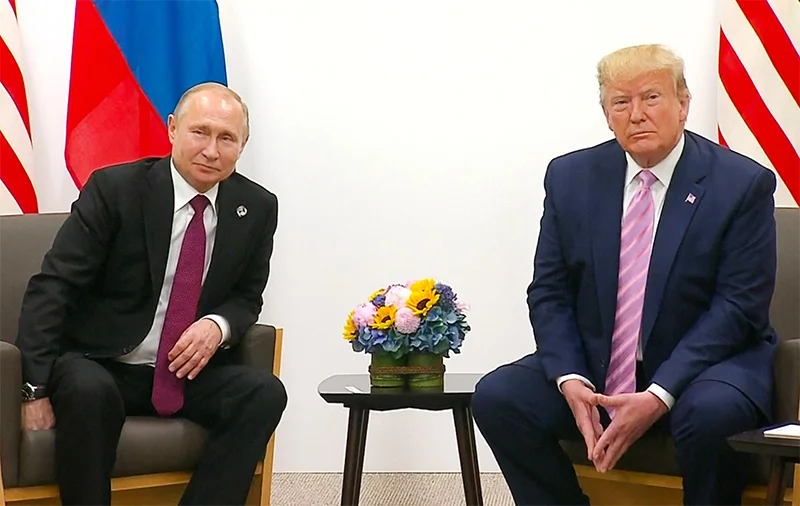
 It could be quite premature to claim that the US has closed ranks completely with the world’s foremost fascist states: Russia, China and North Korea. But there is no denying that the US is breaking with tradition and perceiving commonality of policy orientation with the mentioned authoritarian states of the East rather than with Europe and its major democracies at present.
It could be quite premature to claim that the US has closed ranks completely with the world’s foremost fascist states: Russia, China and North Korea. But there is no denying that the US is breaking with tradition and perceiving commonality of policy orientation with the mentioned authoritarian states of the East rather than with Europe and its major democracies at present.
Increasingly, it is seemingly becoming evident that the common characterization of the US as the ‘world’s mightiest democracy’, could be a gross misnomer. Moreover, the simple fact that the US is refraining from naming Russia as the aggressor in the Russia-Ukraine conflict and its refusal to perceive Ukraine’s sovereignty as having been violated by Russia, proves that US foreign policy is undergoing a substantive overhaul, as it were. In fact, one could not be faulted, given this backdrop, for seeing the US under President Donald Trump as compromising its democratic credentials very substantially.
Yet, it could be far too early to state that in the traditional East-West polarity in world politics, that the US is now squarely and conclusively with the Eastern camp that comprises in the main, China and Russia. At present, the US is adopting an arguably more nuanced approach to foreign policy formulation and the most recent UN Security Council resolution on Ukraine bears this out to a degree. For instance, the UN resolution in question reportedly ‘calls for a rapid end to the war without naming Russia as the aggressor.’
That is, the onus is being placed on only Ukraine to facilitate an end to the war, whereas Russia too has an obligation to do likewise. But it is plain that the US is reflecting an eagerness in such pronouncements to see an end to the Ukraine conflict. It is clearly not for a prolongation of the wasting war. It could be argued that a negotiated settlement is being given a try, despite current international polarizations.
However, the US could act constructively in the crisis by urging Russia as well to ensure an end to the conflict, now that there is some seemingly friendly rapport between Trump and Putin.
However, more fundamentally, if the US does not see Ukraine’s sovereignty as having been violated by Russia as a result of the latter’s invasion, we are having a situation wherein the fundamental tenets of International Law are going unrecognized by the US. That is, international disorder and lawlessness are being winked at by the US.
It follows that, right now, the US is in cahoots with those powers that are acting autocratically and arbitrarily in international politics rather than with the most democratically vibrant states of the West, although a facile lumping together of the US, Russia and China, is yet not possible.
It is primarily up to the US voting public to take clear cognizance of these developments, draw the necessary inferences and to act on them. Right now, nothing substantive could be done by the US voter to put things right, so to speak, since mid-term US elections are due only next year. But there is ample time for the voting public to put the correct perspective on these fast-breaking developments, internationally and domestically, and to put their vote to good use in upcoming polls and such like democratic exercises. They would be acting in the interest of democracy worldwide by doing so.
More specifically it is up to Donald Trump’s Republican voter base to see the damage that is being done by the present administration to the US’ standing as the ‘world’s mightiest democracy’. They need to bring pressure on Trump and his ‘inner cabinet’ to change course and restore the reputation of their country as the foremost democracy. In the absence of such action it is the US citizenry that would face the consequences of Trump’s policy indiscretions.
Meanwhile, the political Opposition in the US too needs to get its act together, so to speak, and pressure the Trump administration into doing what is needed to get the US back to the relevant policy track. Needless to say, the Democratic Party would need to lead from the front in these efforts.
While, in the foreign policy field the US under President Trump could be said to be acting with a degree of ambivalence and ambiguity currently, in the area of domestic policy it is making it all to plain that it intends to traverse a fascistic course. As has been proved over the past two months, white supremacy is being made the cardinal principle of domestic governance.
Trump has made it clear, for example, that his administration would be close to ethnic chauvinists, such as the controversial Ku Klux Klan, and religious extremists. By unceremoniously rolling back the ‘diversity programs’ that have hitherto helped define the political culture of the US, the Trump administration is making no bones of the fact that ethnic reconciliation would not be among the government’s priorities. The steady undermining of USAID and its main programs worldwide is sufficient proof of this. Thus the basis has been adequately established for the flourishing of fascism and authoritarianism.
Yet, the US currently reflects a complex awareness of foreign policy questions despite having the international community wondering whether it is sealing a permanent alliance with the main powers of the East. For instance, President Trump is currently in conversation on matters in the external relations sphere that are proving vital with the West’s principal leaders. For example, he has spoken to President Emmanuel Macron of France and is due to meet Prime Minister Keir Starmer of the UK.
Obviously, the US is aware that it cannot ‘go it alone’ in resolving currently outstanding issues in external relations, such as the Ukraine question. There is a clear recognition that the latter and many more issues require a collaborative approach.
Besides, the Trump administration realizes that it cannot pose as a ‘first among equals’, given the complexities at ground level. It sees that given the collective strength of the rest of the West that a joint approach to problem solving cannot be avoided. This is particularly so in the case of Ukraine.
The most major powers of the West are no ‘pushovers’ and Germany, under a possibly Christian Democratic Union-led alliance in the future, has indicated as much. It has already implied that it would not be playing second fiddle to the US. Accordingly, the US is likely to steer clear of simplistic thinking in the formulation of foreign policy, going forward.
Features
Clean Sri Lanka – hiccups and remedies
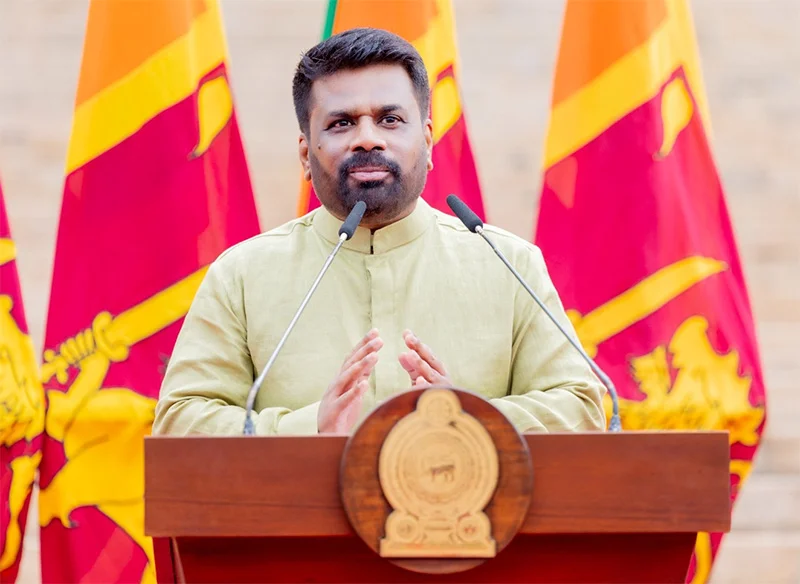
by Upali Gamakumara,
Upali.gamakumara@gmail.com
The Clean Sri Lanka (CSL) is a project for the true renaissance the NPP government launched, the success of which would gain world recognition. It is about more than just cleaning up places. Its broader objectives are to make places attractive and happy for people who visit or use services in the country, focusing more on the services in public institutions and organisations like the SLTB. Unfortunately, these broader objectives are not apparent in its theme, “Clean Sri Lanka,” and therefore there is a misconception that keeping the environment clean is the main focus.
People who realise the said broader objectives are excited about a cleaner Sri Lanka, hoping the President and the government will tackle this, the way they are planning to solve other big problems like the economy and poverty. However, they do not see themselves as part of the solution.
From the management perspective, the CSL has a strategic plan that is not declared in that manner. When looking at the government policies, one can perceive its presence, the vision being “A Prosperous Nation and a Beautiful Life,” the mission “Clean Sri Lanka” and the broader objectives “a disciplined society, effective services, and a cleaner environment.” If the government published these as the strategy, there would have been a better understanding.
Retaining the spirit and expectations and continuing the ‘Clean Sri Lanka’ project is equally important as much as understanding its deep idea. For this, it needs to motivate people, which differs from those motivators that people push to achieve selfish targets. The motivation we need here is to evolve something involuntarily, known as Drivers. Drivers push for the survival of the evolution or development of any entity. We see the absence of apparent Drivers in the CSL project as a weakness that leads to sporadic hiccups and free flow.
Drivers of Evolution
Drivers vary according to the nature of envisaged evolution for progress. However, we suggest that ‘the force that pushes anything to evolve’ would fit all evolutions. Some examples are: ‘Fitting to survival’ was the driver of the evolution of life. Magnetism is a driver for the unprecedented development of physics – young Einstein was driven to enquire about the ‘attraction’ of magnets, eventually making him the greatest scientist of the 20th century.
Leadership is a Driver. It is essential but do not push an evolution continually as they are not sprung within a system involuntarily. This is one of the reasons why CSL has lost the vigour it had at its inception.
CSL is a teamwork. It needs ‘Drives’ for cohesion and to push forward continually, like the Quality Improvement Project of the National Health Service (NHS) in England. Their drivers are outlined differently keeping Aims as their top driver and saying: Aims should be specific and measurable, not merely to “improve” or “reduce,” engage stakeholders to define the aim of the improvement project and a clear aim to identify outcome measures.
So, we think that CSL needs Aims as defined by NHS, built by stakeholder participation to help refine the project for continuous evolution. This approach is similar to Deming’s Cycle for continual improvement. Further, two more important drivers are needed for the CSL project. That is Attitudinal Change and Punishment. We shall discuss these in detail under Psychoactive Environment (pSE) below.
Aside from the above, Competition is another driver in the business world. This helps achieve CSL objectives in the private sector. We can see how this Driver pushes, with the spread of the Supermarket chains, the evolution of small and medium retail shops to supermarket level, and in the private banks and hospitals, achieving broader objectives of CSL; a cleaner environment, disciplined behaviuor, efficient service, and the instillation of ethics.
The readers can now understand the importance of Drivers pushing any project.
Three Types of Entities and Their Drives
We understand, that to do the transformation that CSL expects, we need to identify or adopt the drivers separately to suit the three types of entities we have in the country.
Type I entities are the independent entities that struggle for their existence and force them to adopt drivers involuntarily. They are private sector entities, and their drivers are the commitment of leadership and competition. These drivers spring up involuntarily within the entity.
Type II are the dependent entities. To spring up drivers of these entities commitment of an appointed trustee is a must. Mostly in state-owned entities, categorized as Boards, Authorities, Cooperations, and the like. Their drivers do not spring up within or involuntarily unless the leader initiates. The Government of a country also falls into this type and the emergence of drivers depends on the leader.
Type III entities have neither independent nor dependent immediate leader or trustee. They are mostly the so-called ‘Public’ places like public-toilets, public-playgrounds, and public-beaches. No team can be formed as these places are open to any, like no-man-land. Achieving CSL objectives at these entities depends on the discipline of the public or the users.
Clean Sri Lanka suffers the absence of drivers in the second and third types of entities, as the appointed persons are not trustees but temporary custodians.
The writer proposes a remedy to the last two types of entities based on the theory of pSE explained below.
Psychoactive Environment (pSE) –
The Power of Customer Attraction
Research by the writer introduced the Psychoactive Environment (pSE) concept to explain why some businesses attract more customers than others who provide the same service. Presented at the 5th Global Conference on Business and Economics at Cambridge University in 2006, the study revealed that a “vibe” influences customer attraction. This vibe, termed pSE, depends on Three Distinct Elements, which can either attract or repel customers. A positive pSE makes a business more attractive and welcoming. This concept can help develop Drivers for Type II and III entities.
pSE is not an all-inclusive solution for CSL, but it lays the foundation for building Drivers and motivating entities to keep entrants attractive and contented.
The structure of the pSE
The three distinct Elements are the Occupants, Systems, and Environment responsible for making a pSE attractive to any entity, be it a person, institution, organization, or county. Each of these elements bears three qualities named Captivators. These captivators are, in simple terms, Intelligent, Nice, and Active in their adjective forms.
pSE theorizes that if any element fails to captivate the entrant’s mood by not being Intelligent, Nice, or Active, the pSE becomes negative, repelling the entrant (customer). Conversely, the positive pSE attracts the entrants if the elements are Intelligent, Nice, and Active.
For example, think person who comes to a Government Office for some service. He sees that the employees, service, and environment are intelligent, nice, and active, and he will be delighted and contented. He will not get frustrated or have any deterioration in national productivity.
The Significance of pSE in CSL
The Elements and the Captivators are universal for any entity. Any entity can easily find its path to Evolution or Progress determined by these elements and captivators. The intangible broader objectives can be downsised to manageable targets by pSE. Achievements of these targets make the entrants happy and enhance productivity – the expectation of Clean Sri Lanka (CSL).
From the perspective of pSE, now we can redefine the Clean Sri Lanka project thus:
To make the Elements of every entity in Sri Lanka: intelligent, Nice, and Active.
How Would the pSE be A Remedy for The Sporadic Hiccups?
We have seen two possible reasons for sporadic setbacks and the discontinuity of some projects launched by the CSL. They are:
The absence of involuntary Drivers for evolvement or progress
Poor attitudes and behaviors of people and leaders
Remedy for the Absence of Drivers
Setting up a system to measure customer or beneficiary satisfaction, and setting aims can build Drivers. The East London NHS principles help build the Aims that drive type II & II entities. The system must be designed to ensure continual improvement following the Deming Cycle. This strategy will create Drivers for Type I & II entities.
This process is too long to explain here therefore we refrain from detailing.
Attitudinal Change
The most difficult task is the attitudinal and behavioural change. Yet it cannot be postponed.
Punishment as a strategy
In developed countries, we see that people are much more disciplined than in the developing countries. We in developing countries, give credit to their superior culture, mitigating ours as rudimental. The long experience and looking at this affair from a vantage point, one will understand it is not the absolute truth. Their ruthless wars in the past, rules, and severe punishment are the reasons behind this discipline. For example, anyone who fails to wear a car seatbelt properly will be fined 400 AUD, nearly 80,000 LKR!
The lesson we can learn is, that in Sri Lanka, we need strong laws and strict punishment together with a type of strategic education as follows.
Psychological Approach as a Strategy
The psychological theory of attitude formation can be used successfully if some good programmes can be designed.
All attitude formations start with life experience. Formed wrong or negative attitudes can be reversed or instilled with correct attitudes by exposure to designed life experiences. The programmes have been developed using the concepts of Hoshin Kanri, Brainstorming, Cause-and-Effect analysis, and Teamwork, in addition to London NTS Quality Improvement strategies.
The experience and good responses we received for our pSE programs conducted at several institutions prove and have built confidence in our approach. However, it was a time, when governments or organisations did not pay much attention to cultural change as CSL expects in the country.
Therefore, we believe this is a golden opportunity to take the CSL supported by the pSE concept.
Features
Visually impaired but ready to do it their way
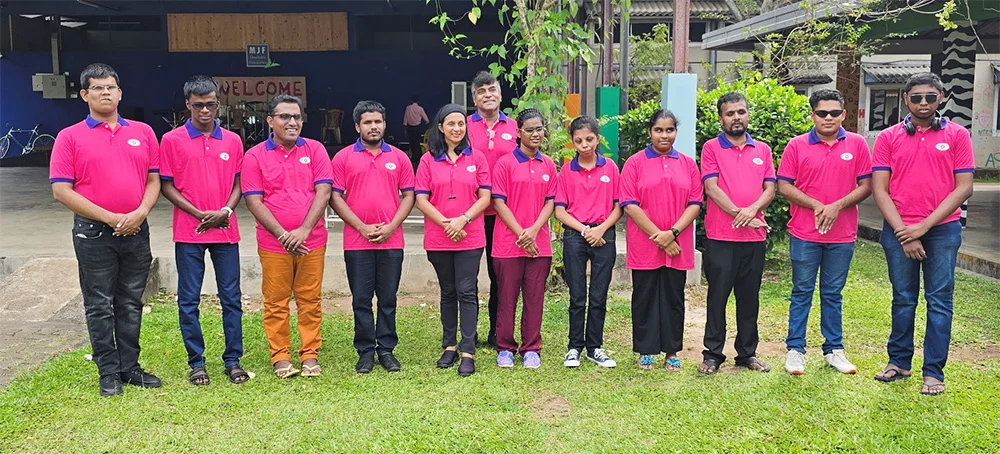
 Although they are visually impaired youngsters, under the guidance of renowned musician Melantha Perera, these talented individuals do shine bright … hence the name Bright Light.
Although they are visually impaired youngsters, under the guidance of renowned musician Melantha Perera, these talented individuals do shine bright … hence the name Bright Light.
Says Melantha: “My primary mission is to nurture their talent and ensure their sustainable growth in music, and I’m thrilled to announce that Bright Light’s first public performance is scheduled for 7th June, 2025. The venue will be the MJF Centre Auditorium in Katubadda, Moratuwa.”
Melantha went on to say that two years of teaching, online, visually impaired youngsters, from various parts of the island, wasn’t an easy ride.
There were many ups and downs but Melantha’s determination has paid off with the forming of Bright Light, and now they are gearing up to go on stage.
According to Melantha, they have come a long way in music.
“For the past few months, we have been meeting, physically, where I guide them to play as a band and now they show a very keen interest as they are getting to the depth of it. They were not exposed to English songs, but I’ve added a few English songs to widen their repertoire.
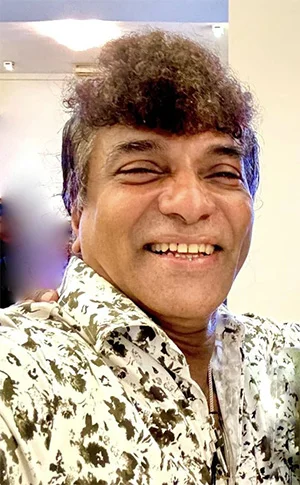
Melantha Perera: Invented a notation
system for the guitar
“On 7th June, we are opening up for the public to come and witness their talents, and I want to take this product island-wide, giving the message that we can do it, and I’m hoping to create a database so there will be a following. Initially, we would like your support by attending the show.”
Melantha says he didn’t know what he was getting into but he had confidence teaching anyone music since he has been in the scene for the past 45 years. He began teaching in 2015,
“When I opened my music school, Riversheen School of Music, the most challenging part of teaching was correcting tone deaf which is the theoretical term for those who can’t pitch a note, and also teaching students to keep timing while they sang and played.”
Melantha has even invented a notation system for the guitar which he has named ‘MelaNota’. He has received copyrights from the USA and ISO from Australia, but is yet to be recognised in Sri Lanka.
During Covid-19, Melantha showcased MelaNota online and then it was officially launched with the late Desmond De Silva playing one of his tunes, using MelaNota.
Melantha says that anyone, including the visually impaired, can play a simple melody on a guitar, within five minutes, using his notation system.
“I’ve completed the system and I’m now finalising the syllabus for the notation system.”
Melantha has written not only for the guitar, but also for drums, keyboards, and wind instruments.
For any queries, or additional information, you could contact Melantha at 071 454 4092 or via email at thebandbrightlight@gmail.com.
-

 Business4 days ago
Business4 days agoSri Lanka’s 1st Culinary Studio opened by The Hungryislander
-

 Sports5 days ago
Sports5 days agoHow Sri Lanka fumbled their Champions Trophy spot
-

 News7 days ago
News7 days agoKiller made three overseas calls while fleeing
-
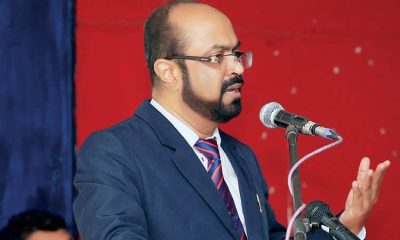
 News6 days ago
News6 days agoSC notices Power Minister and several others over FR petition alleging govt. set to incur loss exceeding Rs 3bn due to irregular tender
-

 Features5 days ago
Features5 days agoThe Murder of a Journalist
-
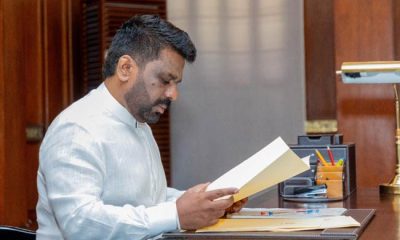
 Features5 days ago
Features5 days agoExcellent Budget by AKD, NPP Inexperience is the Government’s Enemy
-
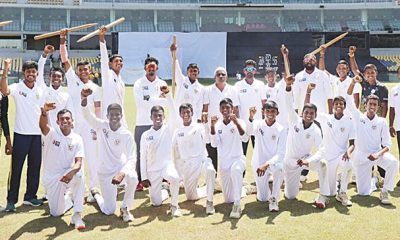
 Sports5 days ago
Sports5 days agoMahinda earn long awaited Tier ‘A’ promotion
-

 News6 days ago
News6 days agoMobile number portability to be introduced in June











